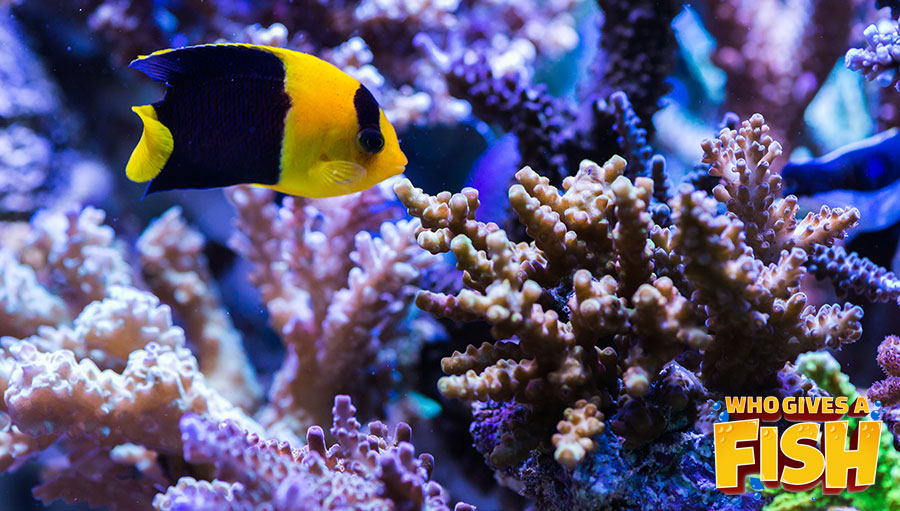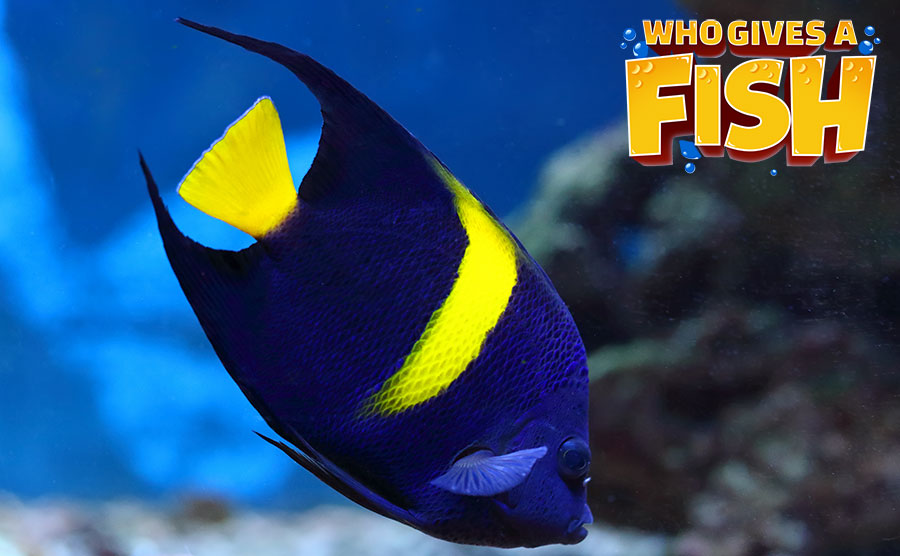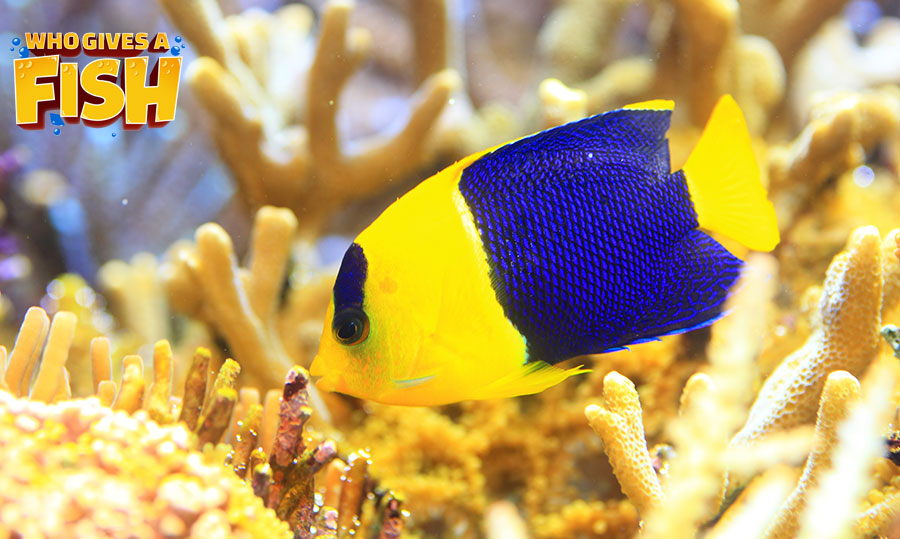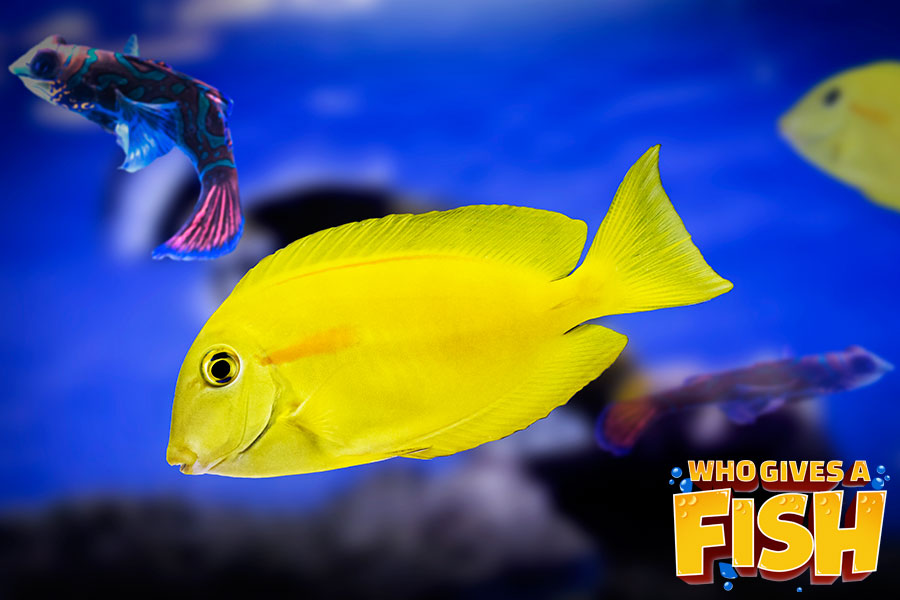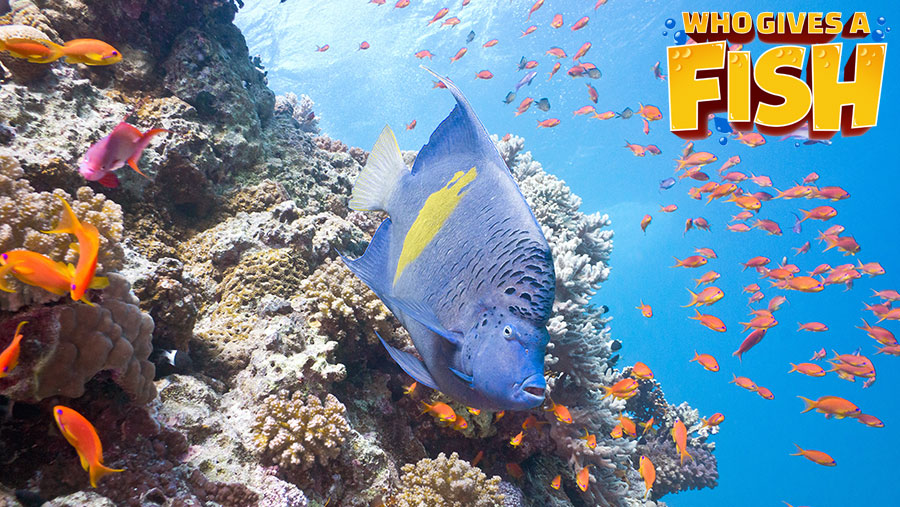Angelfish
Marine Angelfish are exceptional creatures and are a few of the most captivating fish around. They have graceful movement, an exquisite form, and generally exhibit dazzling, vibrant colors. Their bodies are condensed laterally, giving them a flat disc-like shape that grants them the ability to slip between reef crevices and rocky outcroppings.
They are available in all shapes and sizes, and despite them being very flamboyant, their coloration literally helps them to blend in with the shadows and patterns of the reef.
The wonderful Angelfish
Saltwater angelfish differ greatly in respect to their requirements for care, and with specimens caught in the wild, helping them adapt to aquarium life can be a challenging.
However, once they are well-established they are fairly rugged, which makes these elegant specimens extremely desirable. As they mature, Angelfish do tend to become very territorial, so it is usually advised to only house a single specimen.
A lot of the fish feed only on tunicate and sponge, and adult specimens can be disastrous to a reef. There are prepared angel formulas that contain sponge, but it usually can be hard to get an angel to welcome new foods. However, once an angelfish is feeding, it is possible for it to live for many years. A good example is the aquarium in France, which has kept several specimens of saltwater angelfish for well over 20 years with great success.
The list of saltwater angelfish below comprises of numerous aquarium fish species. Each fish guide has in-depth angelfish advice pertaining to their places of behaviors, origins and habitats, as well as the fish care required for successfully keeping angelfish aquariums. Angelfish images are also supplied within each fish guide to aid with saltwater fish recognition, and help in choosing a fish for a pet.
Angelfish Aquariums
Saltwater angelfish are treasured for their unusual shape and peculiar colors. They are also preferred for their smart behavior, seemingly able to recognize their owner. However, being able to successfully keep angelfish aquariums is dependent on numerous factors. It’s crucial to choose the correct angelfish for your specific set-up and tank size, and supply the correct foods for that particular species. A few angelfish are not intended to be reef safe. Compatible tank mates must also be found.
Angelfish are known grazers, frequently looking for food. Depending on the species, some will snack on filamentous and micro algae, and a few will chew on macro algae. It is best for them to be introduced into an already settled saltwater aquarium, and one with ample algae growth. Small crustaceans and live rock housings are also beneficial.
Angelfish must be ready to receive new foods in their diet in order to live in an aquarium environment and are therefore considered hard to look after. Feeding a large variety of foods is advised in order to tempt them into eating. Once feeding has been initiated, they can survive for prolonged periods of time whilst in captivity.
A few angelfish, excluding the Pygmies (Centropyge) are tunicate and sponge eaters. This makes them difficult to adapt as these foods are usually not included in prepared fish foods. Numerous frozen, sponge-based foods are now accessible and should be fed to certain angelfish, mainly those of the genus Holocanthus.
Angelfish Compatibility
Saltwater Angelfish are known to be fairly aggressive fish, and are also extremely territorial. These fish will also quarrel with their own species, and will usually not stand for any other species. There are varying levels of aggressive behavior, dependent on the species, but it is generally a good idea to keep a single specimen. When merging different classes of fish, endeavor to place the angelfish in last. Inserting new fish to an already well-established public aquarium can sometimes cause territorial conflict.
- Small Dwarf Angel or Pygmy Angels Centropyge species, can generally do well in a community fish tank in combination with other non-aggressive fish. Some of the more standard sized angels, similar to the ones from the Chaetodontoplus and Genicanthus genera, and a few of the other mid-sized species will do best in a public tank setting. Tank mates that get on well with these marine angels include Gobies, Anthias, Blennies, Butterflyfish and other alike non-related species.
- Larger saltwater angelfish, noted from the Pomacanthus and Holacanthus genera, are very territorial and are known to be more aggressive. They should be kept with other fish that also have a more aggressive nature. Eels, Damsels, Groupers, Triggerfish, Tangs and Hawkfish can make good comrades.
Blending different species of angelfish generally never works. There are some exceptions, but only in larger aquariums. A few that can be housed as couples or maybe a small harem include:
- Lemonpeel Angelfish Centropyge flavissimus
- Cherub Angelfish Centropyge argi
- Blackspot Angelfish Genicanthus melanospilos
- Herald’s Angelfish Centropye heraldi
- Bicolor Angelfish Centropyge bicolor
A large Arabian Angelfish in the wild
Angelfish In The Wild
Saltwater Angelfish are usually discovered on shallow reefs in the tropical waters of the Indian Ocean, the Atlantic Ocean and the Western Pacific Oceans. The bulk of the angelfish species are found in the Western Pacific Ocean, only nine species are found in the Atlantic Ocean and as little as four in the Indian/Eastern Pacific Ocean areas. The family Pomacanthidae, angelfishes, consists of 9 genera comprising of roughly 87 species of saltwater angelfish. They are able to be distinguished from the comparably shaped butterflyfish by firm preopercle spines found on each of the lower gills of the angelfish.
Marine angelfish generally dwell among shallow reefs. They are diurnal, moving around and eating throughout the day, and seeking refuge among crevices in the reef and rocky outcroppings in the evenings. A few live in solitary, however some are found in couples, or living in harems or smaller groups that consist of a superior male and numerous females. These fish are aquatic spawners. They release numerous small eggs inside the planktonic water pillar where they float with the currents until they hatch.
Saltwater angelfish are extremely colorful and come in various sizes. As immature fish, they can have a more distinct coloration than they do as adults. These fish are also protogynous hermaphrodites, which essentially means they start their life cycle as females with superior specimens turning into males. The males are also able to regress back to female if the social position changes. A few of the adult angelfish are known to become territorial as they get older and it is thought that maybe the different coloration amongst the younger fish keep them from being the targeted by the older fish’s hostility. Another enticing bit of information is that a few angels are also known to carry out cleaner fish duties as immature fish.
Regarding their size, angelfish can range from around 4 inches (10 cm) and up to 24 inches (60 cm) while in the wild. The smallest species, known as the Pygmy Angel or the Dwarf Angel, can only reach up to about 6″ (15 cm). Other species range from average sized to fairly big, with the biggest angelfish reaching around 24″ (60 cm). All Marine angels have tail fins that are crescent-shaped, or lunate and small mouths. A lot of angels have cosmetic streamers that stretch from the outer tips of the dorsal and tail fins.
Saltwater angelfish are extremely alike to the similarly flamboyant butterfly fishes. However, angels are distinguished by their firm preopercle spines that are found on each of the lower gills, which are missing on the butterflyfish. They are part of the Pomacanthidae family, a detailed name for these preopercle-spine fish that is derived from the Greeks, with “Poma” which means cover and “akantha” which means thorn.


